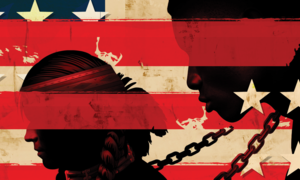1,891 Results
Teaching Hard History Podcast Series
AP World History Is Worth Saving

Teaching Hard History From the Beginning

Teaching the Hard History of Indigenous Slavery

Teaching Black History Beyond February
Students notice when Black history is taught only in February, but they deserve to learn this American history year-round. These resources emphasize engaging students' communities and lived experiences, including how you can incorporate local stories in lessons—and move Black history from the margins to your everyday curriculum.
- Black History Month Is Over. Now What?
- Out of the Mouths of Babes
- Recovering and Teaching Local History
Explore Honest History by Building Partnerships
To understand the complexities of the present, we must connect with the hard history of our country’s past. And we can learn about that honest history outside the classroom—in museums and field trips—because “No educator can accurately map out the whole landscape of our history alone. We are all stronger when we traverse the terrain together.”
- Partnering With Museums to Teach Honest History
- A Student’s Take on Sugar-coated History
- Preserving a More Honest History
New Resources for Teaching Hard History
Our students deserve an honest account of our nation’s history. That’s why we’re proud to share our new and expanded Teaching Hard History resources. They will help you tell a more complete story of American slavery that starts with Indigenous enslavement and includes students of all ages. To teach our students the truth about our shared hard history, we’ll need to start where the stories—and the learning—begin.
- Teaching Hard History: American Slavery |Key Concepts Videos
- Teaching Hard History: Grades K-5
- Teaching Hard History: Grades 6–12
Partnering With Museums to Teach Honest History
